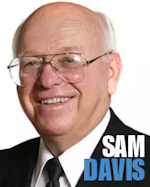While the demand for engineers has waxed and waned over the past half century, the need seems to be growing again. At least, that’s the premise of Meeting the Growing Demand for Engineers and Their Educators 2010-2020, a conference that will be held in Munich, Germany, Nov. 9-11, 2007.
U.S. engineering employment has had its ups and downs since the 1950s. In the military and aerospace sectors, there was a tendency to keep watching your back to see if someone was going to tap you on the shoulder and say you were laid off because your company lost a contract.
After the Cold War, U.S. college students stayed away from engineering because the demand for engineers decreased. Plus, schools in the U.S. had difficulty finding good math and science teachers, which led to lower enrollments in engineering schools. When the number of commercial and industrial high-technology jobs started to increase, U.S. companies had to look offshore for engineers.
Many American companies have resorted to the H-1B non-immigrant visa category under the Immigration & Nationality Act, which lets American companies and universities seek temporary help from skilled foreigners who have the equivalent of a U.S. bachelor’s degree. H-1B employees are employed temporarily in a job category considered by the U.S. Citizenship & Immigration Services (USCIS) to be a "specialty occupation."
The actual size of the H-1B program is difficult to gauge due to exemptions from the 85,000-person quota limit. In fiscal year 2004, 130,497 new H-1B visas were approved. In fiscal year 2005, 116,927 were approved. The total was reduced to 65,000 beginning in 2006. Yet demand for H1-B employees is so high that American corporations have filed for H-1B applicants six months in advance of issuing the visa in 2007. USCIS has received over 130,000 applications from U.S. corporations for 2007-2008.
Engineering and educator demand isn’t just a problem for the U.S. The conference flyer notes that "The migration of engineering work to developing nations, coupled with the rising demand for engineers worldwide, has had considerable impact on the global market for engineers. This situation is further aggravated in many countries by shortages of qualified science, math, and technology teachers at the primary and secondary levels, with these subjects often taught by general practitioners when they are taught at all."
The conference will post two key questions. First, will we be able to recruit and train enough engineers to meet the technical challenges facing our society? And second, do we have sufficient numbers of teachers properly prepared to educate future engineers and other technical professionals in the 21st century?
In bringing together representatives from diverse public and private sectors, the conference has three objectives. First, it will seek to establish and expand partnerships and open channels of communication among the constituent organizations. Second, it will make recommendations to the relevant organizations based on best practices identified and agreed upon by the conferees. Third, it will aim to develop action plans that help those countries and educational sectors most in need of solutions to implement the recommendations.
The conference organizers hope to agree on a set of action items, develop roadmaps for instituting best practices identified by the conferees, and identify opportunities for future collaboration on these issues. The agenda will include presentations by leading figures from industry, academia, and government as well as moderated panel discussions and group work. There also will be a poster session and other opportunities for sharing ideas
This conference has some noble goals. I can only hope that it will improve engineering education and increase the number of working engineers. Of course, it would also help increase the circulation of engineering publications.
The previous engineering downturn probably has cost IEEE and other engineering organizations some members. Therefore, the IEEE and VDE (Association for Electrical, Electronic and Information Technologies in Germany) are joining engineering societies, industry representatives, pre-university education leaders, institutions of higher learning, and policy makers to discuss strategies for addressing the looming shortages of engineers and technical educators worldwide.
The conference will be held at the ArabellaSheraton Grand Hotel, Arabellastrasse 6, Munich, Germany. For more information about the program, registration, hotel arrangements, or paper submission, visit www.ieee.org/go/demandsummit.
